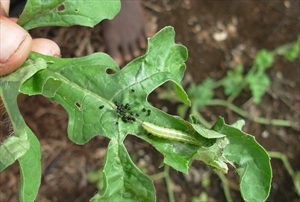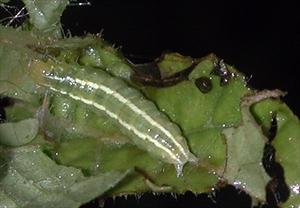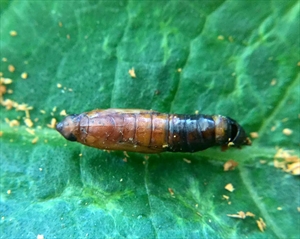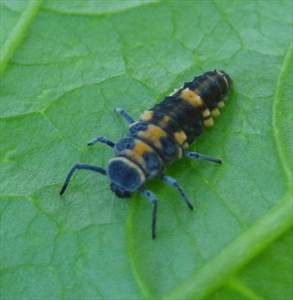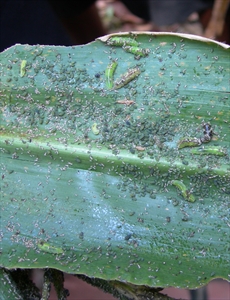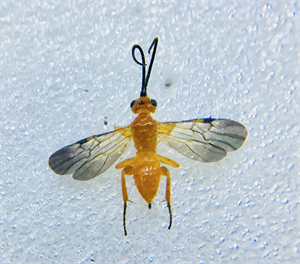- Worldwide distribution. In tropics and sub-tropics. On cucurbits; common cucurbits are watermelon, cucumber, melon, pumpkin and snake gourd. An important pest.
- Eggs are laid in small groups on the buds or flowers. The larvae hatch, feed on growing tips of new leaves, roll the leaves, fasten them with silk, and eat them between the veins. Young fruits are attacked.
- Natural enemies: parasitoid wasps; lacewing, ladybird beetle, hoverfly larvae.
- Cultural control: check regularly for infestations (rolled leaves, droppings), and squeeze exposed larvae (mostly on underside of leaves) and those in rolled leaves between finger and thumb.
- Chemical control: PDPs: chilli, derris, pyrethrum, or neem; use Bt (Bacillus thuringiensis), or spinosad (or spinetorum), but best on young larvae. Avoid synthetic pyrethroids, if possible.

